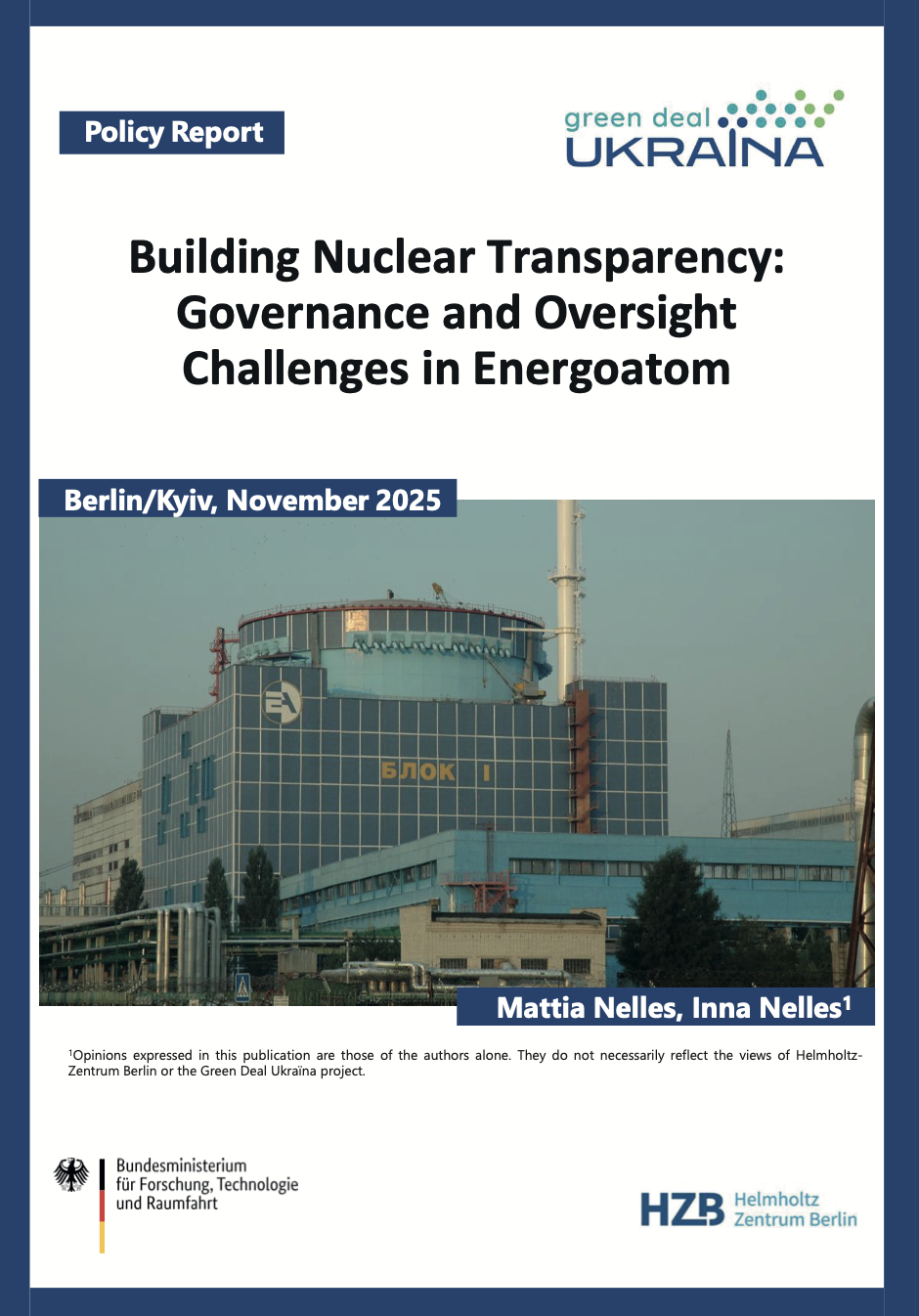Building Nuclear Transparency: Governance and Oversight Challenges in Energoatom
by Green Deal Ukraina
Since Russia’s full-scale invasion in 2022, Ukraine’s energy infrastructure has suffered catastrophic damage – with available generation capacity dropping from over 37 GW to just 12 GW. Nuclear power, managed by the state-owned enterprise Energoatom, now accounts for roughly 60-70% of the country’s electricity production. In response to reduced generation capacity, Ukraine launched the “Great Nuclear Construction” initiative to complete and expand the Khmelnytskyi Nuclear Power Plant (KhNPP), with the potential for up to four new reactors. Projected to cost up to $25 bn by 2030, the effort is viewed as vital for energy security and EU energy integration, despite facing significant financial, technical, and governance risks.
Corporate governance reforms in Ukraine’s state-owned enterprises (SOEs) have made significant progress. This is evident with the March 2024 adoption of Law No. 3587-IX, which formalises supervisory boards and mandates accountability. Energoatom became a joint stock company in January 2024, and its supervisory board was appointed in June. However, the board only began operating in January 2025 due to disputes over contracts, pay, and insurance. This board’s independence has been further weakened by the resignation of Timothy Stone, one international expert who reportedly resigned due to aforementioned internal problems.
Despite formal reforms, transparency, legal protections, and depoliticised governance remain incomplete, drawing criticism from EU and G7 partners. At the same time, Ukraine’s EU accession process and obligations under the Association Agreement underscore the urgency of aligning Energoatom’s governance with European norms, both as a condition for accession and for EU financial and technical support to Energoatom.
